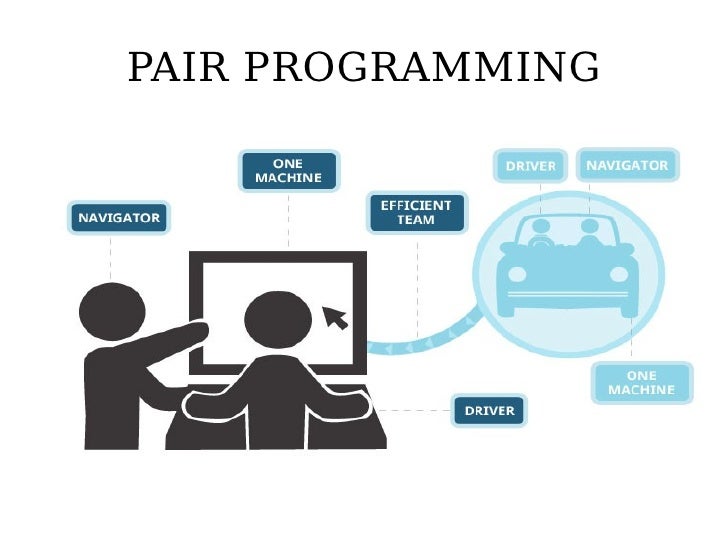The Guide To Effective Pair Programming

Executive Summary

In this comprehensive exploration of pair programming, we unravel its nuances, revealing not only its benefits but also the pivotal principles that drive successful partnerships and strategies to harness its full potential.

Introduction
Pair programming is an agile software development technique where two individuals collaborate at a single workstation, resulting in a plethora of advantages. This guide delves into the intricacies of pair programming, unearthing the key tenets that are indispensable for maximizing its effectiveness.
The 5 Pillars of Pair Programming
Mastering the following five pillars will lead to a transformative pair programming experience:
Communication
- Open and Transparent: Foster an environment of unhindered dialogue, allowing for uninterrupted idea exchange and constructive criticism.
- Active Listening: Engage attentively with your partner, demonstrating a genuine desire to understand their perspectives and insights.
- Respectful Feedback: Provide feedback judiciously, balancing critical observations with constructive suggestions and appreciation.
- Patience and Empathy: Allow your partner ample time to express their thoughts, empathizing with their struggles and celebrating their successes.
Trust
- Belief in your Partner: Place unwavering faith in your partner’s capabilities, fostering an environment of mutual respect and support.
- Openness to Feedback: Embrace feedback from your partner, recognizing it as an opportunity for growth and improvement.
- Willingness to Experiment: Encourage experimentation and creative thinking, allowing for novel approaches and innovative solutions.
- Equal Partnership: Treat each other as equals, irrespective of experience or seniority, valuing each individual’s contributions equally.
Technical Expertise
- Complementary Skillsets: Pair programmers should possess diverse skill sets, enabling them to leverage each other’s strengths and compensate for their weaknesses.
- Shared Knowledge: Engage in knowledge sharing, fostering a reciprocal flow of information and expanding both individuals’ skillsets.
- Continuous Learning: Dedicate time to professional development, jointly exploring new technologies and approaches to enhance your collective expertise.
- Refactoring and Code Reviews: Regularly review and refactor code, ensuring code quality and adherence to best practices.
Process and Structure
- Clear Roles and Responsibilities: Define distinct roles for each programmer, such as driver, navigator, or observer, to maintain focus and prevent confusion.
- Regular Breaks and Retrospectives: Incorporate frequent breaks to enhance focus and hold retrospectives to evaluate progress and identify areas for improvement.
- Pair Programming Patterns: Implement established pairing patterns, such as Ping-Pong Pairing or Driver/Navigator Pairing, to foster effective collaboration.
- Collaboration Tools: Utilize online collaboration tools, such as shared code editors, version control systems, and video conferencing, to facilitate seamless collaboration.
Team Dynamics and Culture
- Psychological Safety: Cultivate an inclusive environment where individuals feel comfortable expressing their thoughts and concerns without fear of judgment.
- Shared Goals and Vision: Align on a common set of goals and objectives, fostering a sense of shared purpose and motivation.
- Flexible Mindset: Embrace flexibility and adaptability, recognizing the need to adjust strategies and approaches based on changing circumstances.
- Celebration of Successes: Acknowledge and celebrate your collective accomplishments, fostering team cohesion and a sense of accomplishment.
Conclusion
By meticulously implementing the principles outlined in this guide, you can establish a thriving pair programming environment. Continuous refinement and adaptation to specific team dynamics are essential to optimizing your partnership. Embrace the potential of pair programming, unleashing a new era of productivity, innovation, and collaborative problem-solving.
Keyword Phrase Tags
- Pair Programming
- Agile Development
- Teamwork
- Software Engineering
- Communication

This is a useless post, pair programming is a terrible practice. You need to be able to work independently and not rely on someone else to hold your hand.
Pair programming is a valuable practice. It can help you learn from others, identify and fix bugs faster, and write better code. I highly recommend it.
I’ve never tried pair programming before. What are some of the benefits?
I’m not so sure about pair programming. I’m afraid it would slow me down.
Pair programming is great for when you want to get twice the work done in half the time.
Oh, pair programming is just what I need. Another person to micromanage me.
I tried pair programming once. It was like trying to write a song with a drunk toddler.
Pair programming can be a great way to learn new techniques and improve your coding skills. Just be sure to find a partner who is willing to share their knowledge.
I’m not sure I’m ready for pair programming. I’m still new to coding.
I love pair programming! It’s so much fun to work with someone else and learn from each other.
I’m not sure if pair programming is right for me. I’m a bit of a lone wolf.
I’ve heard that pair programming can help you write better code. Is that true?
Oh, sure. Pair programming is the best way to waste time and get nothing done.
I once tried pair programming with a guy who kept falling asleep. It was like coding with a narcoleptic sloth.